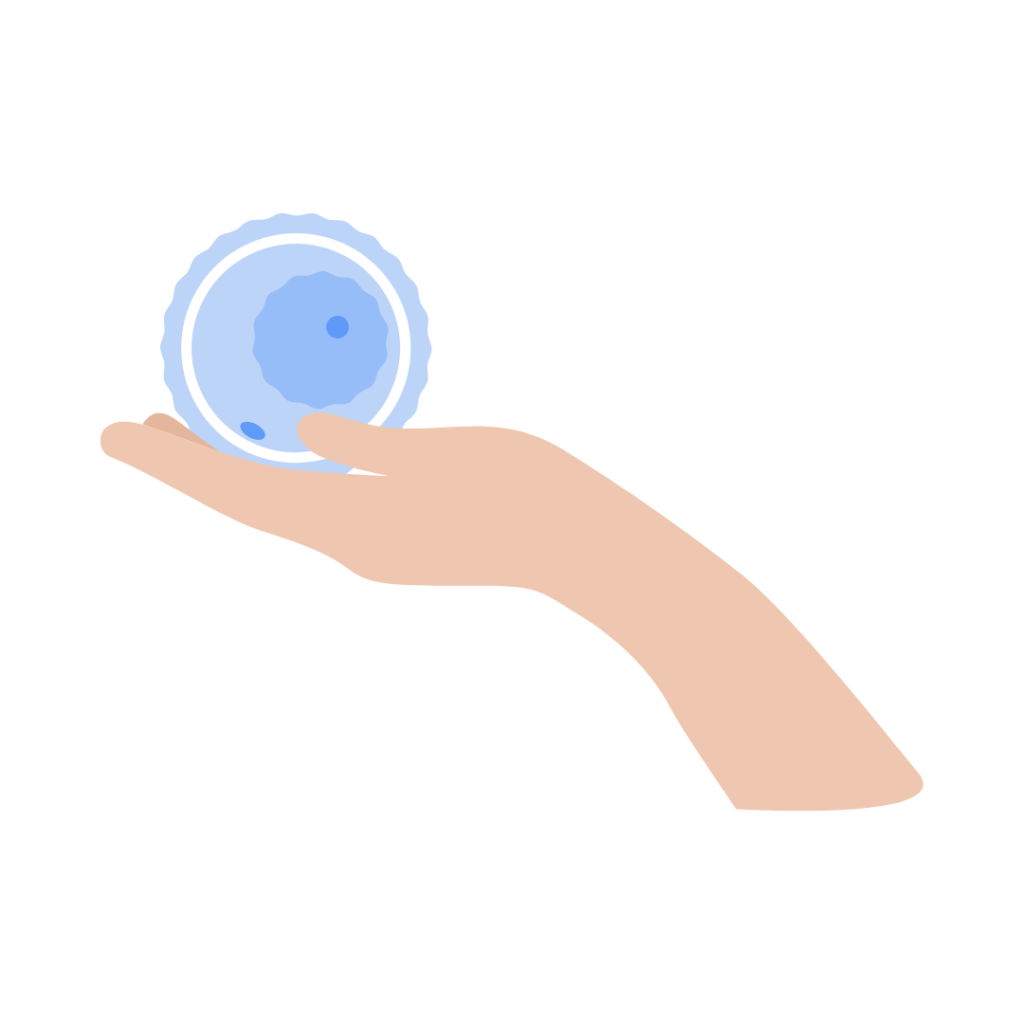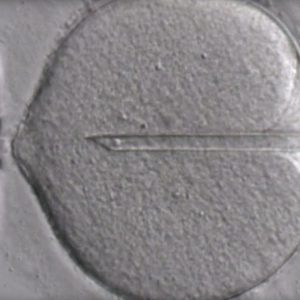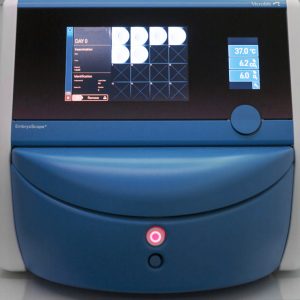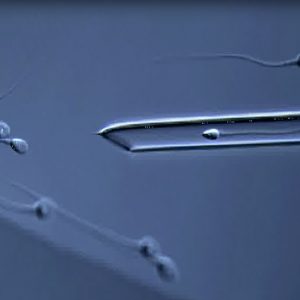Assisted Reproduction has allowed many people with fertility problems to achieve their dream of having children. But for homosexual women, the technological advances that have been achieved with the ROPA Method have meant a before and after in their motherhood.
In this article we will explain what the ROPA method is, how it works, and why we talk about shared motherhood when we refer to this technique.
How does the ROPA method work?
The ROPA method, or Reception of Oocytes from the Partner, is an Assisted Reproduction technique that allows a lesbian couple to actively participate in the entire pregnancy process until giving birth.
The process consists of one of the partners undergoing an ovarian stimulation in order to achieve follicular development that allows more mature oocytes to be obtained in that menstrual cycle. After this, a follicular puncture is performed, where the best quality oocytes are selected to be inseminated with donor sperm through In Vitro Fertilisation or ICSI in the laboratory. After three or four days, they will be transferred to the uterus of the recipient mother, who will be in charge of giving birth to the baby.
For this process to work, it is essential that the menstrual cycles of the two women are synchronised, as both have to undergo hormone treatment.

The process is carried out through the following detailed steps:
First consultation
Choice of donor
Ovarian stimulation
Endometrial preparation
Egg retrieval
In vitro fertilisation
Embryo transfer
Pregnancy test
What is the success rate of the ROPA method?
The success rates of the ROPA method are very similar to those of In Vitro Fertilisation, as this method is actually carried out by IVF.
It should be borne in mind that the final result depends on several factors. On the side of the mother who provides the eggs, the age and the quality and quantity of the eggs obtained after ovarian stimulation will be very relevant. On the recipient mother’s side, the condition of the uterus will be decisive.
According to the “Statistical Report on Assisted Reproduction Techniques 2016“, the pregnancy rate per cycle with the ROPA method can exceed 60%. In our centre, the success rate for this treatment is 85% per cycle.
To ensure these figures and increase the chances of achieving pregnancy, it is very important that you and your partner follow the medical recommendations at all times and monitor each stage of this method properly.
Your first Assisted Reproduction visit free of charge
When is it recommended to resort to shared motherhood?
The ROPA method is primarily indicated for lesbian couples who wish to have a biological child and both participate in the process, one as the donor mother and the other as the recipient/gestational mother.
In order to access the ROPA method, both the mother who will provide the eggs and the recipient must meet a series of requirements:
– It is recommended that the mother who provides the eggs be the youngest to ensure the best quality of the eggs. However, the final decision is yours with the guidance of the medical team.
– It is also recommended that, above all, the woman who provides the eggs should undergo genetic testing to avoid possible transmission of hereditary diseases.
– The pregnant mother must have a uterine cavity without malformations and must not have any diseases that could affect or prevent pregnancy.
Women must be legally married, according to law 14/2006 on Assisted Human Reproduction Techniques, as the ROPA method involves a non-anonymous gamete donation.
Pros and cons of the ROPA method
Like all Assisted Reproduction techniques, the ROPA method has a series of advantages and difficulties that must be understood in order to make an informed decision.
Below, we will list both the pros and cons of this technique.
Advantages of the ROPA method
– It allows lesbian couples to share the biological motherhood of their child, with one of them providing the eggs and the other carrying and giving birth to the child.
– It encourages bonding between mother and baby from the beginning of the process.
– It has high success rates
– Possibility of performing a fresh embryo transfer, as two women are involved in the process.
Disadvantages
– It requires synchronisation between the menstrual cycles of the two women, which is physically and psychologically demanding.
– It involves undergoing hormone treatment with possible side effects, such as abdominal pain, bloating, mood swings or ovarian hyperstimulation syndrome.
– It does not guarantee pregnancy or prevent the risk of miscarriage or foetal malformation.
Does the NHS in Spain pay for the ROPA method?
Unfortunately, the answer is no. The ROPA method is not included in the basic portfolio of services of the National Health System (NHS), so women who want to access this particular technique must do so privately.
These legal limitations mean that the ROPA method is only available in private assisted reproduction clinics, which offer greater flexibility and customisation of treatment.
However, it is very important to know that there are also alternatives offered by the NHS, such as IVF or Artificial Insemination with donor sperm.
Assisted Reproduction Law in Spain and the ROPA method
As mentioned above, Law 14/2006 is the law that regulates the use and application of Assisted Reproduction techniques in Spain.
In relation to the ROPA method, Spanish law states that:
– Women who want to undergo the ROPA method must be legally married.
– Women who wish to undergo the ROPA method must sign an informed consent form expressing their willingness to undergo the treatment and their acceptance of the possible consequences.
– Women who wish to undergo the ROPA method must meet the medical and psychological requirements for all other assisted reproduction techniques.
– The sperm donor must be anonymous and cannot know the identity of the recipients or the child born. Nor can the donor claim any rights or obligations over the sperm.
– Both women shall have equal rights and duties over the child.
– Only exceptionally, in extraordinary circumstances involving a certain danger to the life or health of the child or where appropriate under the laws of criminal procedure, may the identity of the donors be disclosed, provided that such disclosure is indispensable to avert the danger or to achieve the intended lawful purpose.
What is the price of the ROPA method in Spain?
The price of the ROPA method in Spain varies depending on the clinic and the type of treatment chosen. In general, it can be estimated that the average cost is around 6,000 euros per cycle, although it can range from 3,500 to 8,000 euros.
At IVFforYOU we are very proud to offer you very competitive prices, ensuring access to the best specialists and state-of-the-art medical facilities.
The price of the ROPA method at IVFforYOU is €3,600 and includes:
– The first consultation
– Medical tests.
– Ovarian stimulation and endometrial preparation.
– Ovarian puncture and embryo transfer.
– In vitro fertilisation and embryo culture.
– The donor’s semen sample.
However, there are some additional aspects that may increase the final price, for example:
– The need for more than one cycle to achieve pregnancy.
– Freezing and preservation of supernumerary embryos.
– The performance of additional genetic or diagnostic tests.
– Taking out an insurance or a financing plan to cover part or all of the treatment.
In addition, as with all other Assisted Reproduction techniques and treatments, it is important to know that medication is generally not included.
For this reason, it is very important to find out about the conditions and services offered by each clinic before choosing one or the other. It is also advisable to compare prices and assess the most appropriate options according to the needs and economic possibilities of each couple.
The ROPA method is a very good alternative for lesbian couples to actively participate in the pregnancy of their future baby. Now the final decision is up to you and your partner!
If you are interested in any type of Assisted Reproduction treatment in Barcelona, we invite you to write to us, the first visit with our experts is free!










